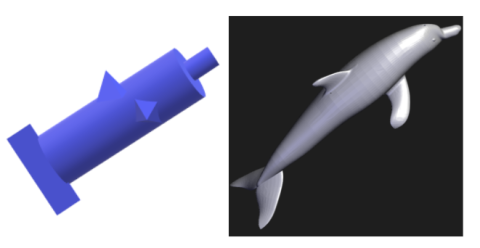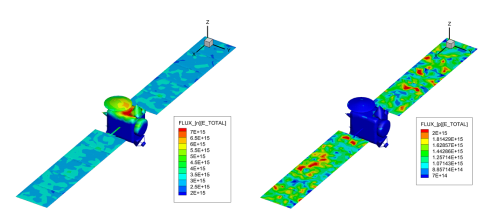In this project, there are two primary objectives: To demonstrate proof of concept for the MCNP unstructured mesh methodology by comparing a CSG dolphin to a UM dolphin. Followed by creating a mesh and performing radiation transport calculations on the NASA Satellite Dawn. This will also include doing research to properly simulate the natural radiation environment in space, the material composition of the Dawn satellite, and the effects of a nuclear weapon detonation targeting the satellite.
Team: Ian Parker, Christian Charache, Anthony Lloyd, Jordan Crist
Project Advisors: Dr. Tim Goorley (LANL) and Dr. Joshua Spencer (LANL)

Members of the design group
Project Motivation
Monte Carlo N-Particle (MCNP) radiation transport code is often used in nuclear engineering to study the effects that electrons, photons, and neutrons would have on an environment. In MCNP, the standard geometry is constructive solid geometry (CSG), which is simplistic and less accurate than the alternative Unstructured Meshing (UM). UM gives the user added flexibility, allowing for complex geometries to be simulated through MCNP, be 3-dimensionally visualized, and allows for more accurate calculation performance in these types of problems.

Figure 1 - Proof of Concept Image, comparing CSG to UM Dolphin.
Project Description
In this project, there are two primary objectives: To demonstrate proof of concept for the MCNP unstructured mesh methodology by comparing a CSG dolphin to a UM dolphin. Followed by creating a mesh and performing radiation transport calculations on the NASA Satellite Dawn. This will also include doing research to properly simulate the natural radiation environment in space, the material composition of the Dawn satellite, and the effects of a nuclear weapon detonation targeting the satellite.

Figure 2 – Neutron flux (left) and Photon flux (right) from Nuclear Weapon detonation spectrum.
Results and Accomplishments
To date, the primary results we have are the completed mesh of the simplified Dawn satellite and completed proof of concept of a dolphin. A concise deliberation was also created on how to take a CAD model to an unstructured mesh, and then simulate radiation transport. The radiation transport calculations performed with MCNP6.2 via Atilla4MC proved to show that the main area of concern for this specific satellite was the solar panel wings when simulating photon interactions.